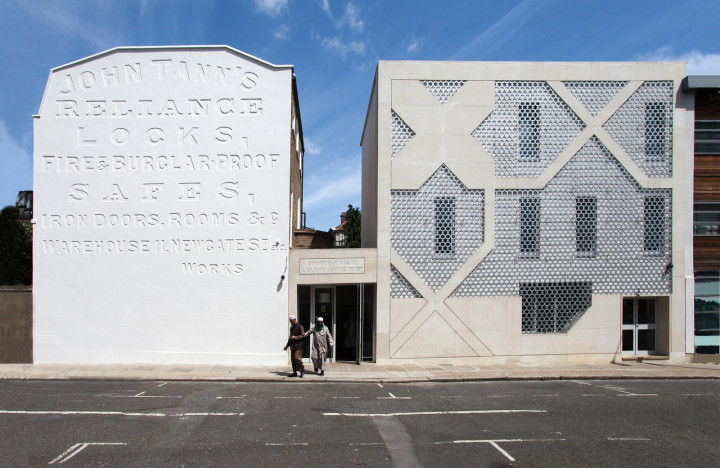London – Mosques are not just public places to practice religious rituals in Britain and they are often built on the expenses of the Muslim community – based on the initiative of the residents; these mosques have been used as centers for gatherings and celebrations; funds for food aid; and even as gyms. In 1990, mosques in Britain were around 400 but now they reached 1800. Thus, concerns might rise regarding the type of services which could be provided by these mosques and would they develop be in future.
Architect Shahed Saleem has worked on renewing the figure of British mosques; the architect nominated for the Aga Khan Award 2016 has been tasked by communities with designing Muslim places of worship up and down the country and has done away with traditional minarets and domes.
Saleem, a researcher at the Barlett UCL is currently finishing a book, an ambitious project on Muslim architecture in Britain – charting the evolution from the earliest buildings in the late 19th century to mosques being designed today.
The typology of the British mosque and what “English Islam” looks like is being discussed more and more in the wake of the Brexit vote.
For Saleem, architecture is a powerful marker of current exploration of what British Islam is; he considered that if migrants can use our architecture to explore the new identity in this country, which can be useful and futher represents more accurately their conditions and current circumstances. He added that he’s like all the Muslims of Diaspora who came from other countries to settle in Britain and recreate their culture.
It’s little wonder his designs are inspiring people to talk about what a mosque should or shouldn’t look like. He use material in bold ways and the unapologetic yet modern way he applies Islamic geometric design to his architecture is refreshing.
So far, his designs for mosques in U.K. cities don’t feature traditional onion-shaped arches but are sharper with clean outlines. They could even be seen as Cubist.
He says meshing new forms with the past is significant in his work, to maintain the connection with Islamic history, architecture, and culture, but by using it in a way that is contemporary. It’s about using it in a new way for its own purposes and situation.
Saleem, whose parents are from India, says he’s part of the first generation of British-born Muslims of migrant parents in postwar Britain, which puts him in a unique situation as someone designing places of worship now.
To date, he has seen the completion of the mosque he designed on Hackney Road in east London, has a mosque in Aberdeen underway, has received planning permission for a mosque design in Camberwell in south London, and has designs for a mosque in South Woodford in northeast London.
Saleem doesn’t hold back from critiquing mosque designs that add features such as minarets, traditionally used to deliver the call to prayer, when they are not functional in the U.K. He revealed that he faces difficulties when people want to just add minarets on – just because they think a mosque is a mosque, therefore it should have a minaret; he thought that this leads to slightly dishonest architecture.
Saleem talks about a mosque he is proud of, the Shahporan Masjid and Islamic Centre Trust on Hackney Road. At first, he says, the community wasn’t really sure about it, but they came to like it when they saw the designs.
